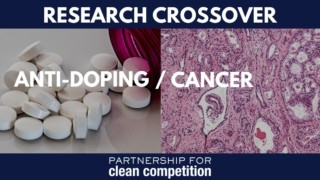Backed by the Partnership for Clean Competition, researchers led by Dr. Mario Thevis at German Sport University Cologne have experimented with new ways to determine the time of drug intake and dose administered for samples containing LGD-4033, also called ligandrol.
Ligandrol is a selective androgen receptor modulator (SARM), and it is prohibited by the World Anti-Doping Agency (WADA). SARMs offer similar anabolic properties to anabolic steroids but with reduced androgenic features. They target specific tissues in the body.
SARMs like ligandrol, andarine and ostarine are among WADA’s banned anabolic agents. In 2019 alone, ligandrol led to 62 adverse analytical findings (AAFs) against athletes.
However, over the last few years, a number of AAFs that concerned SARMs like ligandrol have been attributed to contaminated dietary supplements. These contested AAFs create an urgency to develop methods to tell the difference between inadvertent contamination and SARM abuse.
The need for more specific tests for ligandrol is compounded by the improving analytical capabilities in doping control laboratories. These laboratories can now detect much lower levels of contaminants, increasing the need for tests that can determine ingestion date and dose.
This PCC-funded study, published November 2021 in Analytical and Bioanalytical Chemistry, examined the elimination behavior of ligandrol after oral application. The research generated information on elimination behavior as well as detection times for different metabolites. The ultimate conclusion was that analyte ratios combined with approximate concentrations of ligandrol can help lead to an estimation about the time point and amount of drug exposure.
The scientists suggest more elimination studies with more volunteers and further dosing, including alternate means of administration.


